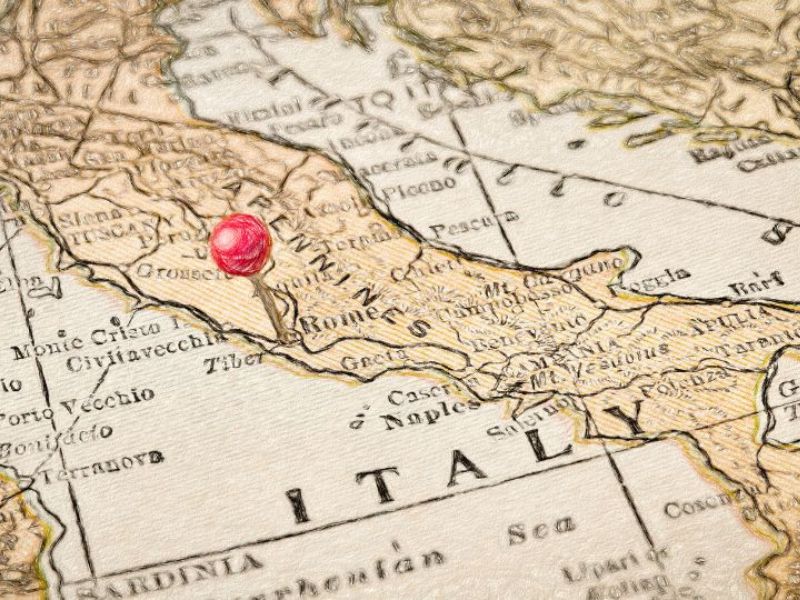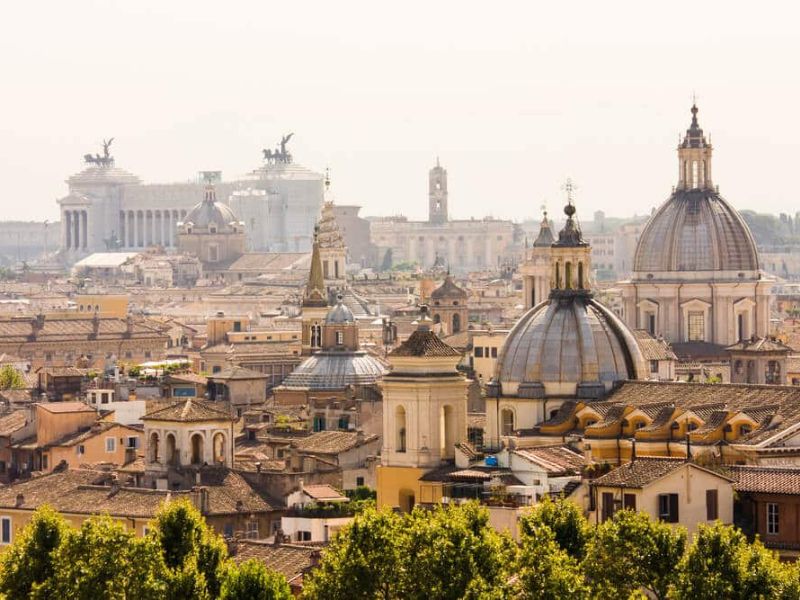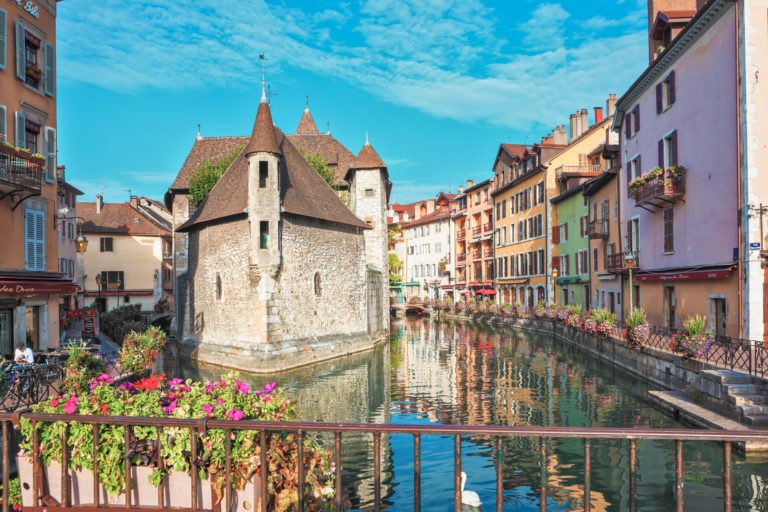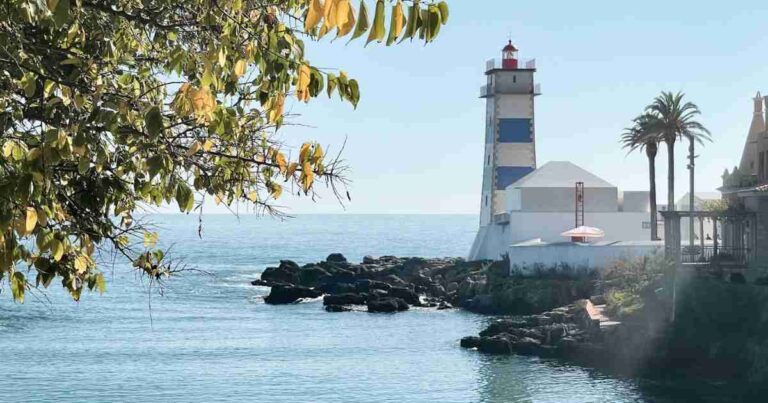Where is Rome? (A 2024 location travel guide)
Live Adventure Travel contains affiliate links and is a member of the Amazon Services LLC Associates Program. If you make a purchase using one of these Amazon links, I may receive compensation at no extra cost to you. See my Disclosure Policy for more information.
Rome is without a doubt one of the most famous cities in the world. Known for its striking landmarks, influential history and mouth-watering food.
But… before planning your visit you may find yourself wondering…Where is Rome?
We see this fantastic city on our TV screens, computers and in cinemas but a lot may not be familiar with where exactly it is situated.
So, today we are going to find out!

Section 1: The Location of Rome
In this section, we are going to discuss the location of Rome. Where it is, How to get there and commonly asked questions about the city’s location.
What country is Rome in?
Rome is the capital of Italy, the largest and most influential city in the country. Home to world-famous landmarks such as the Colosseum, Trevi Fountain and St. Peter’s Basilica.
The city sits on the central-western portion of Italy, stretching along the banks of the Tiber River.
And…it hosts quite a backdrop with it being surrounded by seven hills – Palatine Hill, Aventine Hill, Capitoline Hill, Caelian Hill, Esquiline Hill, Viminal Hill.
What region is Rome in?
Rome is situated in the Lazio region of Italy, or otherwise known as Latium in English. It is located in the central part of Italy with the Tyrrhenian Sea to the west.
Geographically, Rome is in a great position for tourism as its Mediterranean climate, is perfect for those looking to explore the city all year round.
As Rome is also the capital of Italy, its influence spans far further than the region both politically and economically.
Is Rome in Europe?
Yes, Rome is in Europe. Is it located in the Southern part of the continent and is easily connected to other major European cities through Europe’s extensive train network.
This makes it a popular tourist destination for travellers exploring Europe as a whole. It’s location is also great for those wanting to explore wider regions in Italy, offering day trips to places such as Florence and the Amalfi Coast.
How far is Rome from other major Italian cities?
Rome’s central location makes it the perfect base for exploring other major cities in Italy. The high-speed trains, known as “Frecciarossa”, depart regularly from Rome’s Termini Station and can take you to a multitude of destinations within a short span.
- Rome to Florence: The high-speed Frecciarossa trains can take you from Rome to Florence in about 1.5 hours.
- Rome to Milan: The journey from Rome to Milan typically takes around 3 hours on the Frecciarossa trains.
- Rome to Venice: A train ride from Rome to the romantic city of Venice will take approximately 3.5 to 4 hours.
- Rome to Naples: If you’re planning a trip to the historic city of Naples, the high-speed train can get you there in just over an hour.
- Rome to Turin: Turin is a bit farther than the other cities, with a train journey from Rome taking about 4 hours.
- Rome to Bologna: A trip from Rome to Bologna will typically take about 2 hours on a high-speed train.
- Rome to Genoa: Plan for a train journey of approximately 4 to 4.5 hours if you’re travelling from Rome to Genoa.
Is Rome Easy to get to?
Absolutely, reaching Rome is quite straightforward, thanks to its extensive transportation network and its status as a significant hub for international flights.
Rome’s main airport, Leonardo da Vinci-Fiumicino (FCO), is the busiest airport in Italy and ranks among the top 10 in Europe.
It’s served by numerous international airlines, offering direct flights from major cities worldwide.
Furthermore, Rome’s well-connected train, bus and taxi services ensure an easy commute from the airport to the city centre.
The city’s secondary airport, Ciampino (CIA), serves several low-cost airlines, providing an affordable travel option for budget-conscious travellers.
Is Rome in the EU?
Yes, Italy, the country where Rome is located, is a member of the European Union (EU).
As such, Rome follows the EU regulations and uses the Euro as its currency.
This makes travelling to Rome convenient for citizens of other EU countries, as they can use their national identity card instead of a passport and do not need to worry about currency exchange.
However, non-EU citizens will need to have a valid passport and may require a visa depending on their country of origin.
Is Rome in the Schengen Zone?
Indeed, Rome, being in Italy, is part of the Schengen Zone. This zone comprises 26 European countries that have abolished passports and other types of border control at their mutual borders.
For travellers, this means you can travel freely within the Schengen Zone on a single visa, making travel to Rome and other Schengen countries more straightforward.
However, keep in mind that the duration of stay and entry requirements might differ based on your nationality. Always ensure you have the right travel documents before embarking on your journey.

Section 2: The Historic Impact of Rome’s Location
Rome’s location has played a big part in its history. It was built in the middle of Italy, close to the sea but still protected by hills.
This helped Rome grow strong in ancient times. It was easy to defend the city from enemies, but they could also trade with other countries by sea.
Even today, Rome’s location helps it stay important. It is a hotspot for business, tourism, and politics.
Millions of people visit Rome every year to see its ancient ruins and beautiful art from the Renaissance period.
The Renaissance was a time of great cultural, artistic, and scientific rebirth in Europe, with Rome being at the centre of it all.
Some of the most iconic landmarks, such as the Colosseum and the Vatican City, are located in Rome, making it a must add to any Europe Itinerary. And while the city see’s thousands of visitors each day there still remains some special places, like the Beautiful Streets of Trastevere that are almost fairytale like and off the beaten path.
Section 3: Rome Location Impact on the Modern World
In today’s world, Rome’s location still plays a big role. Its central position in Italy and Europe makes it a hub for travel, connecting many different countries.
This makes Rome an important city for business and international relations. Plus, its rich history and beautiful sights continue to attract tourists from all around the world.
Rome’s location near the Mediterranean Sea also helps it have a warm climate that many people enjoy. From its ancient past to now, Rome’s location is a big part of what makes it special.
Section 4: Unique Features of Rome’s Location
Rome’s location has a few special features that make it different from other places. First, it’s built on seven hills. These hills give Rome unique landscapes and beautiful views.
Second, the Tiber River flows through the city. This river not only provides water but also adds to the beauty of Rome.
Lastly, Rome is not far from the sea. This means it has lovely warm weather most of the time, and also has easy access to sea ports for trade and travel.

Section 5: Where is Rome Located FAQ
What kind of climate does Rome get?
Rome experiences a Mediterranean climate with hot, dry summers and mild, wet winters. Making it a great destination to visit all year round.
How does Rome’s location impact its economy?
Being centrally located in Europe, Rome’s location has made it a hub for international trade and business. The city also benefits from tourism, with millions of visitors coming every year to see its historical landmarks.
Is Rome easy to get around?
Rome’s transportation system is quite extensive and efficient, making it easy for both residents and visitors to navigate the city.
They have a great network of buses, trams and underground services. Taxis are quite affordable so getting around the city is hassle-free but it is important to note that Uber does not work in Rome like other European capitals.
What is the weather like in Rome?
The weather in Rome is generally pleasant throughout the year.
The summer months from June to August see temperatures often climbing above 30°C (86°F), while winters, from December to February, are usually around 8-15°C (46-59°F).
The city gets most of its rainfall in the autumn and winter months, with November being the wettest month.
Despite the occasional rain, Rome boasts plenty of sunshine throughout the year, enabling visitors to enjoy its outdoor attractions at any time of the year.
What currency do they use in Rome?
In Rome, like the rest of Italy, the currency used is the Euro (€). This currency is widely accepted throughout Europe, making it convenient for travellers.
ATM machines are easily accessible throughout the city, and credit cards are widely accepted in most places.
However, it is always wise to carry some cash, especially while visiting local markets or smaller establishments that might not accept cards.
What is the population of Rome?
Rome is the capital of Italy, with over 2.8 million people living within the city.
Making it the most populated city in the country. The city’s population is a diverse mix of individuals, with a considerable number of immigrants from around the world, contributing to its vibrant and multicultural society.
Is Rome Safe to Visit?
Generally speaking, Rome is considered to be a safe city for tourists. Like any major city, it has its share of petty crime such as pickpocketing or bag snatching, particularly in crowded areas or on public transport. However, violent crime is relatively rare.





